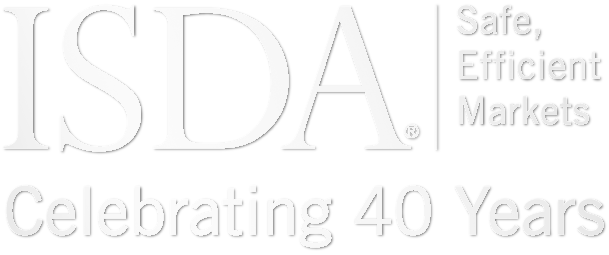
ISDA Chief Executive Officer Scott O'Malia offers informal comments on important OTC derivatives issues in derivatiViews, reflecting ISDA's long-held commitment to making the market safer and more efficient.
During the recent era of regulatory change, a lack of consistency in the way rules were drafted and implemented has been one of the biggest challenges for market participants and regulators. Nowhere is this more evident than in trade reporting requirements for over-the-counter (OTC) derivatives, which were put in place to enhance market transparency. The lack of consistency in what is reported means this objective has not been fully achieved – but with forthcoming rule changes and a new digital approach to reporting, real transparency is finally within reach.
The US Commodity Futures Trading Commission (CFTC) will be first out of the blocks with changes to its swap data reporting rules that incorporate critical data elements (CDEs) developed by the Committee on Payments and Market Infrastructures and the International Organization of Securities Commissions. The first phase of the CFTC’s amended rules will come into effect on December 5 and will be followed by similar changes in Europe and Asia-Pacific over the coming years.
By adopting the CDEs as part of the update to reporting requirements, jurisdictions can ensure greater consistency in the format of reported data fields. These standards will help to address some of the issues but will not solve the entire problem – firms also need a robust way to make sure their interpretation and implementation of the rules is accurate and consistent with that of their peers.
This is where a digital approach can help. As part of ISDA’s Digital Regulatory Reporting (DRR) initiative, industry working groups have developed a collective, mutualized interpretation of the relevant CFTC rule amendments, using the Common Domain Model to transform that interpretation into machine-executable code. This process is now nearing completion ahead of the December 5 deadline, providing a critical tool for effective implementation of the CFTC rules and a roadmap for the other jurisdictions that will follow.
In fact, much of the work being completed now for the amended CFTC rules can be reapplied to rule changes in other regions. An estimated 70% of the coded CFTC rules are expected to directly transfer to the DRR that is already in development for reporting rule changes under the European Market Infrastructure Regulation, while as much as 90% of the combined coded US and European rules may transfer to Asia-Pacific.
The DRR is a real game changer that will reshape the way in which regulations are implemented, based on industry collaboration and peer-reviewed interpretation. It gives market participants access to an open-source, human-readable, machine-executable expression of the rules that they can use to implement the regulations in a way they know will be consistent with their peers. Or, if firms prefer to conduct their own independent interpretation, they can still turn to the DRR to benchmark that interpretation and check they are on the right track.
Of course, using a coded interpretation of complex requirements is big change for market participants and they need to be confident they can rely on the DRR to meet their obligations. To that end, we are working with our members to show how effectively the model works in a real-world, production-level environment, with robust testing of the data that is reported to swap data repositories. We expect this validation to be complete in the coming weeks.
Thanks to the development and adoption of international data standards and the collaborative efforts of market participants, the DRR has brought enhanced transparency within reach of the global OTC derivatives market. We will continue to work with market participants to achieve this goal as regulators in other jurisdictions follow the CFTC with their own changes to reporting rules.
Latest
Future Path - IQ December 2025
At the start of ISDA’s 40th anniversary year, IQ convened the pioneers of the association to reflect on how a desperate need for standardization in the early days of the derivatives market brought dealers together to develop a dictionary of...
Steps to a Vibrant Derivatives Market: SOM Remarks
Steps to a Vibrant and Resilient Derivatives Market December 4, 2025 Remarks at the Mediterranean Partnership of Securities Regulators Scott O’Malia ISDA Chief Executive Officer Good afternoon and thank you to the Mediterranean Partnership of Securities Regulators (MPSR) for...
ISDA Response to BoE on Gilt Market Resilience
On November 28, ISDA responded to the Bank of England’s discussion paper on gilt market resilience. ISDA encourages the Bank of England, before introducing any significant policy changes that would affect the functioning of the gilt repo market, to consider...
Addressing Termination Troubles
When Enron announced a shock $618 million loss on October 16, 2001, it took a further 47 days until it filed for bankruptcy. For Bear Stearns, it took 266 days between its bailout of a structured credit fund run by...



